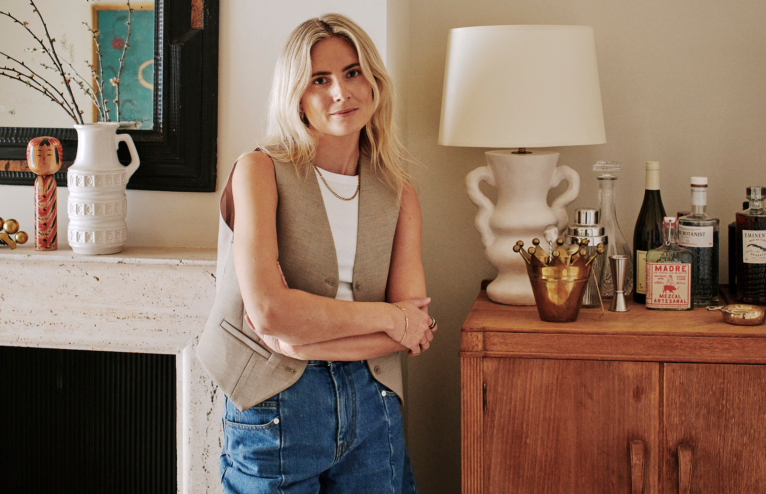Anti-ageing – it’s a term that the beauty industry seems to love…and simultaneously hate. But, why does our relationship with it have to be so complicated?
If you cast your mind back to 2017, leading American beauty magazine Allure rather famously announced it was banning the phrase ‘anti-ageing’ from its pages. The reasons were multifaceted, then-editor Michelle Lee said, although perhaps first among them was that “language matters.” It was long overdue, the decision seemed to say, for us to pause and consider why we attach a negative connotation to something so natural. It is, after all, a privilege to age.
As a society, perhaps we sat with that idea for a while and plenty of beauty brands made changes. Take L’Oreal’s long-held commitment to inclusive advertising campaigns, so that we aren’t bombarded with quite so many teenage models holding creams that promise to banish yet-to-emerge wrinkles.
Trends within the beauty industry shifted too. First came the ‘pro-ageing’ movement: a skincare concept that saw brands flip the conversation: instead of marketing products designed to ‘fight’ the ageing process, they discussed ‘supporting’ the skin as we age instead.
More recently, skincare specifically designed for peri-menopausal and menopausal skin hit the headlines, with brands marketing ingredients and formulas to support a life-stage that had been otherwise overlooked.
On the face of it, all this feels like a step in the right direction, but has it really helped?
Anti-ageing in 2023
Fast-forward to 2023. Can we really say our relationship with the word ‘anti-ageing’ has been redefined? The term itself certainly hasn’t been banished completely; you’ll still see it emblazed across plenty of skincare packaging and it continues to be typed into Google again and again as a search term for skincare.
Although the term might be less forcibly delivered to us in marketing, there’s been precious little guidance or consensus on what a customer or brand should be saying instead (pro-ageing hasn’t taken over by any means). So, now where the word anti-ageing used to be said, there’s a gap, a pause or a brief aside.
Even accidentally, that can mean an extra dose of implied guilt clings to anyone even slightly interested in any skin concern relating to age (and women get enough occasions for guilt to be thrust upon them). Surely, people shouldn’t have to feel pressure to age a certain way, but there shouldn’t be shame placed on anyone interested in treating traditional signs of skin ageing either. Just avoiding the truth of that dichotomy doesn’t help either side.
Moreover, recognising the harm of ‘anti-ageing’ sentiments in society can be important, but it’s not a stretch to say that being ‘anti anti-ageing’ hasn’t really helped customers find products that actually work for them. Simply banishing the word doesn’t provide skincare-based solutions or address the confusion and pressure that can often align with age-related skin goals – in fact, you can easily see how it could reinforce it.
While inclusivity in beauty has made important strides for society, customers’ overarching skincare concerns haven’t transformed that much in its wake. In fact, every month, new products launch that would traditionally fall directly into the anti-ageing category – with formulas promising to help smooth wrinkles, tackle uneven texture and fade hyperpigmentation just the same as before. One look on the shelves (and into women’s bathroom cabinets) and you can tell that the demand is definitely still there for products that improve the appearance of signs of age.
It’s not surprising then that the latest product-grouping solution that avoids the ‘anti-ageing’ term focuses on the ingredients associated with those goals. A positive development, especially as it leads to greater customer education about what is in the products they are buying. Consider the boom in retinoids as a good example. The group of vitamin A derivatives are leading ingredients for smoothing fine lines and improving skin tone and texture; they are also one of the most talked about aspects of skincare in the 2020s thus far.
But focusing on single ingredients isn’t a catch-all solution, especially for individuals who are now confronted with more and more skincare concepts to get their heads around. While it generates discussions about the best retinol or vitamin C or hyaluronic acid, it doesn’t necessarily lead to open and honest conversations – whether that be about skin goals, concerns or how ageing makes us feel.
In a space where new beauty brands seem to be launching every week and new trends emerge (and disappear) via social media constantly, we seem to have forgotten that we don’t have to be pro or anti ageing to be happy and healthy in our complexions.
By simply removing a word like ‘anti-ageing’, rather than addressing and discussing the complexity of society’s relationship with ageing, language might start to matter, but that much-needed conversation is stopped in its tracks.
Ultimately, let’s avoid campaigning to make anti-ageing a dirty word in beauty. To completely demonise its usage only makes discussions around skin ageing either more combative or non-existent, which arguably helps no one. Instead, with openness and acceptance of conversations around skin ageing, we could all better understand not only how to treat skin ageing main signs, but also why we want to, without shame or confusion. And that’s the path to better, well-informed skincare decisions.
Here are some skin-care tips and techniques that may help you:
What’s next for your skincare routine?
If you’ve been struggling for years to find a skincare routine that works for you, the first step is to get to know your skin. Not what people say your skin may need, due to its tone, type or age, but what you like and what you might want to improve.
It might feel uncomfortable, but the secret is to sit down in front of the mirror barefaced and list three things you like and one thing you want to work on. Then, reassess every three months because you’ll be surprised how much things change.
As for your routine itself, for 2023 and beyond, it’s time to simplify our routines. As a guide, embrace ‘the trio concept’, which comprises of Cleanse, Treat and SPF. Washing your face (the cleanse) and protecting your skin (the SPF) should be the sturdy book-ends of all routines. Then, and only then, place your preference of skin-boosting active in the middle, whether that be to smooth expression lines, treat hyperpigmentation or drench the skin with hydration.
A beginner’s guide to building a modern skincare routine:
FOR CLEANSING:
As the saying goes, you wouldn’t take a shower with your clothes on, so there’s no point slathering on your skincare without ensuring you’ve got a clean face too. Traditionally, cleansers were rather overlooked as the boring step in skincare, but find the right one and your skin will thank you for it. Your main focus: choose non-stripping formulas that support your skin’s natural barrier function, which depletes as we age. Ingredients such as ceramides, amino acids and squalene are your friends.
TREAT: FINE LINES
Without aesthetic ‘tweakment’ intervention you can’t completely stop facial wrinkling and sagging, especially around your eyes, mouth, jaw and forehead – that’s gravity and expressions for you. Thus, most topical products actually work on skin quality, aka what might be exacerbating those traditional signs of age. Many nourishing wrinkle-reducing creams act through hydrating claims – they keep the skin smooth and plump so that dehydration doesn’t heighten lines. This works, but only so far. That’s why the newer focus are ingredients that encourage and support the skin cycle by encouraging cell turnover and increasing collagen levels, including retinoids, growth factors and peptides.
TREAT: SKIN TONE AND TEXTURE
Hyperpigmentation and uneven pigment is the most prolific age-related skin change experienced by Black skin, alongside a general desire for a lit-from-within glow across all skin types. The best approach is to protect your complexion in the first place, with antioxidant-rich creams, plus radiance-boosting ingredients including L-ascorbic acid, the most potent form of vitamin C, tranexamic acid and azelaic acid.
TREAT: CLEAR
Adult acne happens, and breakouts beyond our teens and early twenties is a lot more common than traditionally marketed. In fact, the relative increase (compared to falling oestrogen levels) of testosterone during menopause means your skin can produce more congestion-causing sebum. We’ve moved on from harsh scrubs that attack breakouts though – and that’s for all ages. Instead, looking to ingredients such as salicylic acid and benzyl peroxide.
FOR SUN PROTECTION:
Sun protection is the most important part of your skincare regime if you want to achieve any of your main skin goals, including minimising the appearance of wrinkles, hyperpigmentation, inflammation and dryness. In fact, to keep your skin at its healthiest, you should be wearing sunscreen whenever you are in daylight, including through a window, when its cloudy, and in winter, as UV rays from the sun account for the vast majority of extrinsic skin ageing.
We may earn a commission if you buy something from any affiliate links on our site.

























Any Questions or Tips to add?